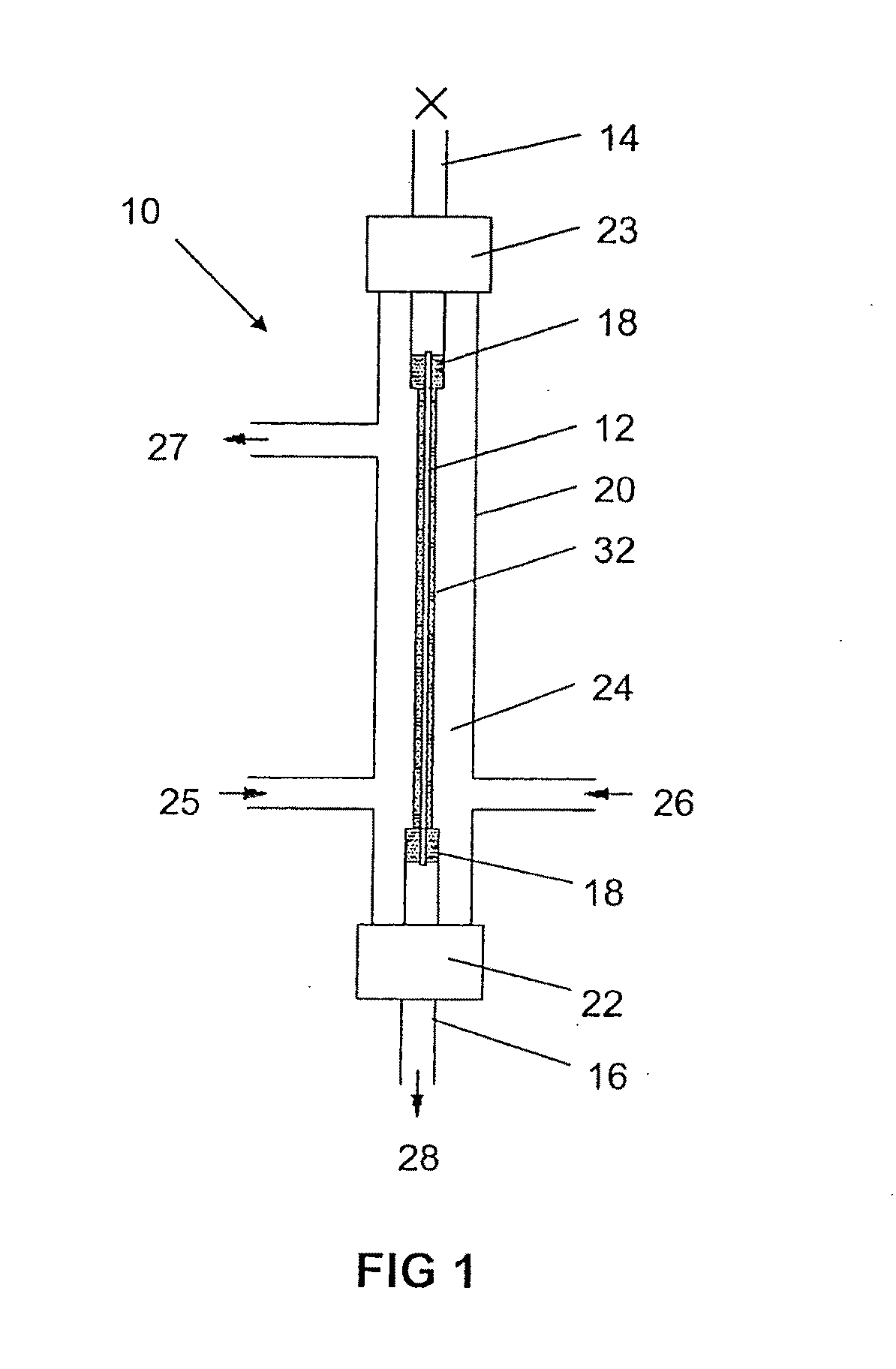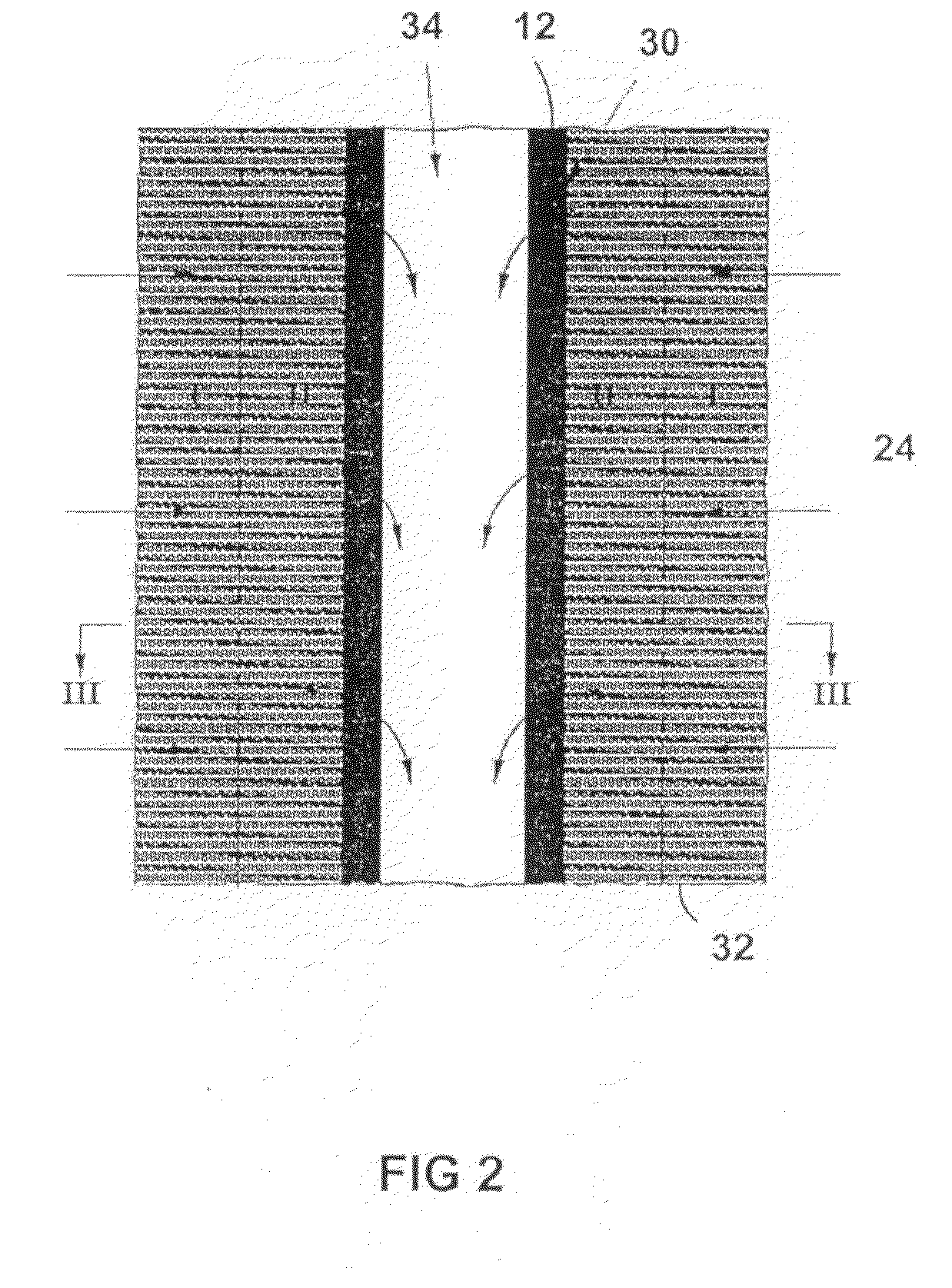Production of secondary metabolites using capillary membranes
a technology of capillary membrane and secondary metabolites, which is applied in the direction of biochemical equipment, fermentation, microorganism fixing/supporting apparatus, etc., can solve the problems of difficult time-consuming and laborious, difficult to time the addition of recombinant protein inducers, and a major obstacle to high cell density growth, so as to extend prolong the duration of the recombinant product production process
- Summary
- Abstract
- Description
- Claims
- Application Information
AI Technical Summary
Benefits of technology
Problems solved by technology
Method used
Image
Examples
example 1
Bacillus subtillus ATCC 21332
Surfactin Production Under Oxygen Limited Conditions
[0093]Surfactin is a lipopeptide-like biosurfactant produced by various strains of B. subtillus. Biosurfactants commonly have the advantage of biodegradability, reduced toxicity and biocompatibility over chemically synthesized surfactants and retain their function at extremes of temperature, pH and salinity (Georgiou et al, 1992). Surfactin also exhibits antimicrobial (Vollenbrioch et al 1997a), antiviral (Vollenbrioch et al 1997b), fibrin clotting inhibition (Bernheimer et al 1970) and anti-inflammatory properties.
[0094]B. subtillus is commonly described as a strict aerobe but it has also been reported that anaerobic growth is possible (Nakano et al 1999; Davis et al 1999). In addition, levels of surfactin production have been shown to be enhanced under oxygen limiting growth conditions (Davis et al 1999). Improved bioreactor and process design for surfactin production have also developed, primarily th...
example 2
Lactococcus lactis P170 Expression System (Bioneer)
[0118]The L. lactis P170 expression system is an auto-inducible expression system that is induced under glucose-limiting growth conditions and with the accumulation of lactic acid, produced by the organism, within the growth environment. Optimal pH for induction is between pH 5.5-6.5. Product is secreted.
[0119]L. lactis strain PRA290, engineered to produce β-lactamase under the control of P170, was used in this example. β-lactamase activity in permeate was quantified spectrophotometrically using a 96-well microtitre plate procedure based on the Nitrocefin method (Oxoid).
Sterilisation:
[0120]Bioreactors 10 were autoclaved and set up for anaerobic operation according to standard operating procedures (SOPs). Filter sterilized medium was dispensed aseptically into each of the medium supply vessels prior to starting the experiment.
Inoculation:
[0121]Bioreactors 10 were each inoculated with 1 ml of L. lactis PRA290 (β-lactamase producing) p...
example 3
Escherichia coli pBAD / gIII Expression System (Invitrogen)
[0128]The pBAD / gIII plasmid is a pBR3222-derived expression vector designed for regulated, secreted recombinant protein expression and purification in E. coli. The gene III signal sequence is used to secrete the recombinant protein into the periplasmic space. The araBAD promoter regulates expression, induced by L-arabinose. The concentration of inducer controls the level of expression. This can be optimized for soluble protein production. The araBAD promoter is repressed in the absence of L-arabinose and in the presence of glucose.
Strain & Culture Conditions:
[0129]E. coli TOP 10 competent cells were transformed with the control plasmid pBAD / gIII / Calmodulin (Calmodulin producing) as described for the Invitrogen pBAD / gIII expression kit (Cat. No. V450-01). Inoculum was prepared from a single colony inoculating 20 ml Terrific Broth with 100 μg / ml ampicillin (Table 2) and incubated for 16 hours at 37° C., 200 rpm. Optimal pH for i...
PUM
| Property | Measurement | Unit |
|---|---|---|
| temperature | aaaaa | aaaaa |
| thickness | aaaaa | aaaaa |
| temperature | aaaaa | aaaaa |
Abstract
Description
Claims
Application Information
 Login to View More
Login to View More - R&D
- Intellectual Property
- Life Sciences
- Materials
- Tech Scout
- Unparalleled Data Quality
- Higher Quality Content
- 60% Fewer Hallucinations
Browse by: Latest US Patents, China's latest patents, Technical Efficacy Thesaurus, Application Domain, Technology Topic, Popular Technical Reports.
© 2025 PatSnap. All rights reserved.Legal|Privacy policy|Modern Slavery Act Transparency Statement|Sitemap|About US| Contact US: help@patsnap.com



